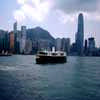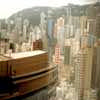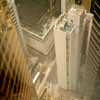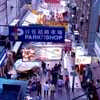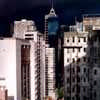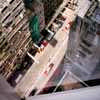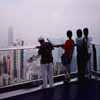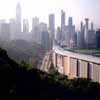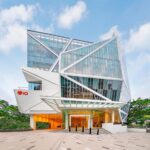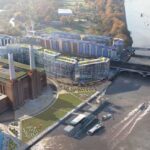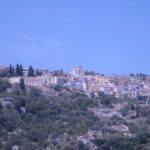Hong Kong Guide, Photographs, HK Kife, Asia Built Environment Images
Hong Kong Architecture Guide – Building Photographs
The City that never sleeps: Hong Kong Architecture Pictures by British architect Adrian Welch
Hong Kong Architecture Guide
Hong Kong Architecture : Photos of key buildings and places around the city
All photos © Adrian Welch
The British Far East – Architecture & The City
Hong Kong guides tend to be by tourists, or inhabitants, but this is by neither.
Written by a temporary worker – architect and writer – on a two month secondment from the UK, the guide takes an offbeat look at every day life in Hong Kong rather than the tourist sites.
HONG KONG THROUGH THE EYES OF AN ITINERANT WORKER
Week One: Arrival
Courteous efficiency and a clean sophisticated airport – Chep Lap Kok – met my arrival in HK. I couldn’t help feeling UK citizens are still welcome here with such a smooth entry.
The heat hits as a wall on leaving the airport, I took two layers off, the flight was cold! Women with straw hats and smog masks mingle with smart businessmen, there’s the friendly noise of local children on some trip. I first encounter the Cantonese ‘noise’ in Frankfurt Airport, continued on the plane, so am a little acclimatised. On the flight I sat next to a very old Chinese man who bumped past me without waiting for me to get up: despite this we struck up a useful camaraderie and shared many jokes using sign language. Very heartening, a great gradual introduction to the Far East.
Catch a bus to HK. The huge scale of blocks even out here on Lantau astonishes, no sprawl, cheek by jowl with untouched landscape.
Week Two: Settling In
Do you get used to the temperature and humidity? Yes, after a few days I found. Ten days on and I’m aware of it but don’t worry anymore about feeling damp, nor do most of my colleagues. As long as you wash daily what else can one do? You can’t feel embarrassed, which was my initial reaction.
Threading through HK are old double decker trams, apparently from Glasgow when the Scots decided they were surplus to modern requirements. I didn’t know about these prior to arrival but they’re fun and very cheap at $2 per ride flat fare, that’s around 16 pence. Beware, they run in parallel but on opposite-routed tracks so don’t stick your head out to take a photo, or it risks being hit! The sound of a tram horn and bell is, with the road crossing repetitive clacking, a key sound of Hong Kong, all pervasive, unforgettable. People on the tram are fairly noisy, especially the Filipinos.
The guidebooks all mention Sundays as being a day when Filipino workers congregate in the centre but until you’re in the thick of it you cannot really understand this phenomenon. Thousands of women in one place, braiding their hair, chatting, picnicking. They occupy the city, laying down their rugs. One of the most powerful gatherings is under Foster’s HSBC building, a populist cathedral for a day! Each group is apparently related to a community back in the Philippines so one could imagine a fascinating comparative mapping from country to city centre.
The Central district is Corbusian dreamland – you can walk through the centre continuously above the traffic, weaving through malls and over traffic-filled ‘gorges’. The system is not totally coordinated so expect some wrong turns! In the heat and humidity this can be exasperating.
The swirling crowds may look chaotic but there is no rush here, no walking lines on the escalators, nor the order of a city like London. Time is less of a concern here it would seem, I don’t know why.
The markets are often dominated by the pungent odour of dried fish. At times it is too much and I have to leave. The exotic mountains of vegetables and meat, live fish and hens has to be seen though. Markets are dominated by the sound of the hatchet chopping away. Chop chop of machete into meat, fish and ice. The chopping is mostly done onto large sections of tree trunks.
I was shocked to see a guy in a butchers smoking a cigarette. Then, two doors down, I saw both butchers smoking, one spring chicken cutting stringy duck with a fag dangling from his mouth. I also saw a butcher loading chicken from damp cardboard in the gutter, utterly unhygienic. The fish splashing disgorges water into the gutter and occasionally they jump out, only to be thrown back in without even a cursory rinse. I wished I had my children with me to see these crabs and fish live on the street, but the wriggling halves of eels – chopped in two – may shock some people.
Week Three: An Inhabitant
Ok, almost two weeks gone in HK, just got access to my website via a bargain laptop (with keys in Japanese) so feel MUCH better. Thoughts? Chinese pop music is a different world. Ok, some rap copycats but almost all is lyrical, soft and generally melancholic…which makes it not exactly ideal for a lonely westerner in their hotel room missing their family! Arty videos, a bit French art-house, a bit old-fashioned and this in many ways is refreshing, especially against the sex & aggression of the american rap sandwich on MTV.
Hong Kong people?
They tend to bump into you with rarely an apology, their concept of personal space is different, totally. They don’t mind pushing into the queue ahead of you, they don’t hold the door open for you – ever – and generally look after themselves. If you are buying something or using a service then you are often treated politely.
If not, then you can be generally treated fairly disdainfully. For example, a first visit to a cafe is met by tea – everywhere – and when the bill came at one cafe both waiters banged another cup down, a physical ‘give me a tip’! No tip meant less vigorous tea banging on subsequent visits. But in one wonton cafe or ‘noodle house’ – where they rarely speak even basic English – I tried in vain to give a tip, so not sure about this aspect.
Week Four: A Regular
Soup.
Sometimes when I ordered a meal I immediately got a bowl of tasty soup. The first time this happened I’d just been to Happy Valley Races – fourteen storeys of humanity watching the floodlit ponies rotate against a skyscraper backdrop. Although I’d had a warmish hot dog and Yoshitori Chicken, the two pints of Carlsberg must have wet the taste buds so I dropped into what became my regular cafe for some noodles.
But first they dropped a bowl of soup in front of me, and I ended up not being able to finish the ever so slightly too oily noodles. A further visit resulted in no soup so I tried the oily noodles again, but no soup. I surmised as to whether you get soup on first meal, or certain times, or with a certain dish, or maybe if you have to wait a long time when the kitchen is busy. But none of this made sense as two weeks later, there was the soup again, with a dish I’d had before – soup free!
The cars?
Hong Kongers love German cars and the wealth of cars was for me the biggest surprise in HK. Ok, I like cars but nevertheless the percentage of expensive cars is phenomenal and noticed by all my western colleagues. There are as many German cars as Asian cars – if you discount the ubiquitous red and silver taxis which are mostly Japanese saloons.
he favourite make has to be the Mercedes, and the bigger the better! Hong Kongers don’t take too well to BMW’s, Jaguar’s or Audi’s, it has to be a 500 or 600 series Merc. Looking down from the hotel I see big chauffer-driven Mercedes swishing through the streets below hour after hour, but there are also cars I’d only seen in magazines before – top of the range Lamborghinis, Ferraris and Maseratis.
Buildings?
They are articulated like most across the sub-tropics to provide shade from the sun. The facades are articulated with air-con boxes. Typical housing has them slapped onto the facade – to save taxes, or possibly to aid functioning and free up valuable space. Better quality buildings have them typically sandwiched between concrete ledges – they become good architectural devices. Air-con seems to be Hong Kongers number one gripe – no week goes by without overhearing someone complaining to their landlord about malfunctioning.
Tea?
In the cafes I visited it was universally jasmine: from clear plastic beakers or porcelain in the smarter venues. Elsewhere, green tea is popular but English / Indian is generally available. Tea is rarely drunk from cups or mugs in the office, but out of small flasks intermittently through the day.
Week Five: The Big Con
Watch out for the condensate! Along most streets the buildings tend to overhang roughly half way across the pavement. You may wonder where the frequent puddles come from: air-conditioning boxes which are generally strapped to the outside of blocks. Embarrassing damp patches on the shirt!
Week Six: Departure Lounge
My time to leave Hong Kong had arrived. The place my five-year old daughter had called Honky Konky will live with me forever. I’d seen the famous view with the junk in front of skyscrapers, and the Peak, but had no real idea of how it would ‘feel’. Like any world destination there are tourist areas, expat areas and places for the locals.
In HK the expat community is huge and very settled, thus pervasive of the experience, especially for workers as opposed to tourists. Although there is a duality of lifestyles here, each one – whether in Kowloon or Wanchai – is so much richer and chaotic than back home. Life is good, the place buzzes and people work really hard, frequently leaving their families to hit the office at the weekend.
As I sat in the departure hall at Chep Lap Kok tapping away on my laptop I realised I’d taken on a bit of the HK life, and I was going to miss the energy of it.
Location: Hong Kong
Comments on my Hong Kong Architecture Guide are welcome
Hong Kong Architecture
Hong Kong Architecture Designs – chronological list
Hong Kong Architecture Tours by e-architect
Hong Kong Buildings : A-H
Hong Kong Building Designs : I-Z
HK Architecture – Selection
West Kowloon Development
Design: Foster + Partners
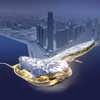
image from architect
West Kowloon Cultural Complex
International Finance Centre, Central
Design: Cesar Pelli & Associates Architects, Rocco Design, Hirsch Bedner Associates
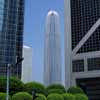
photo © Andrew McRae
IFC 2 skyscraper
Comments or building suggestions / photos for the Hong Kong Architecture Guide page welcome

